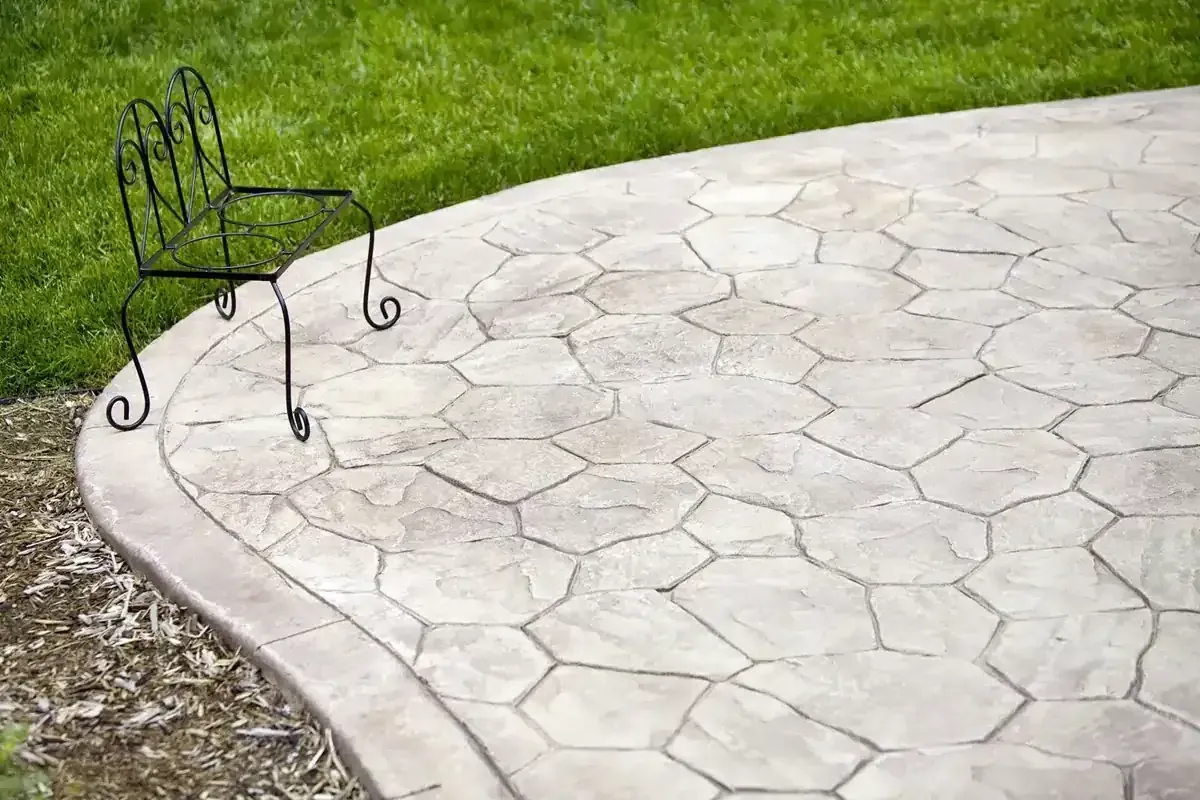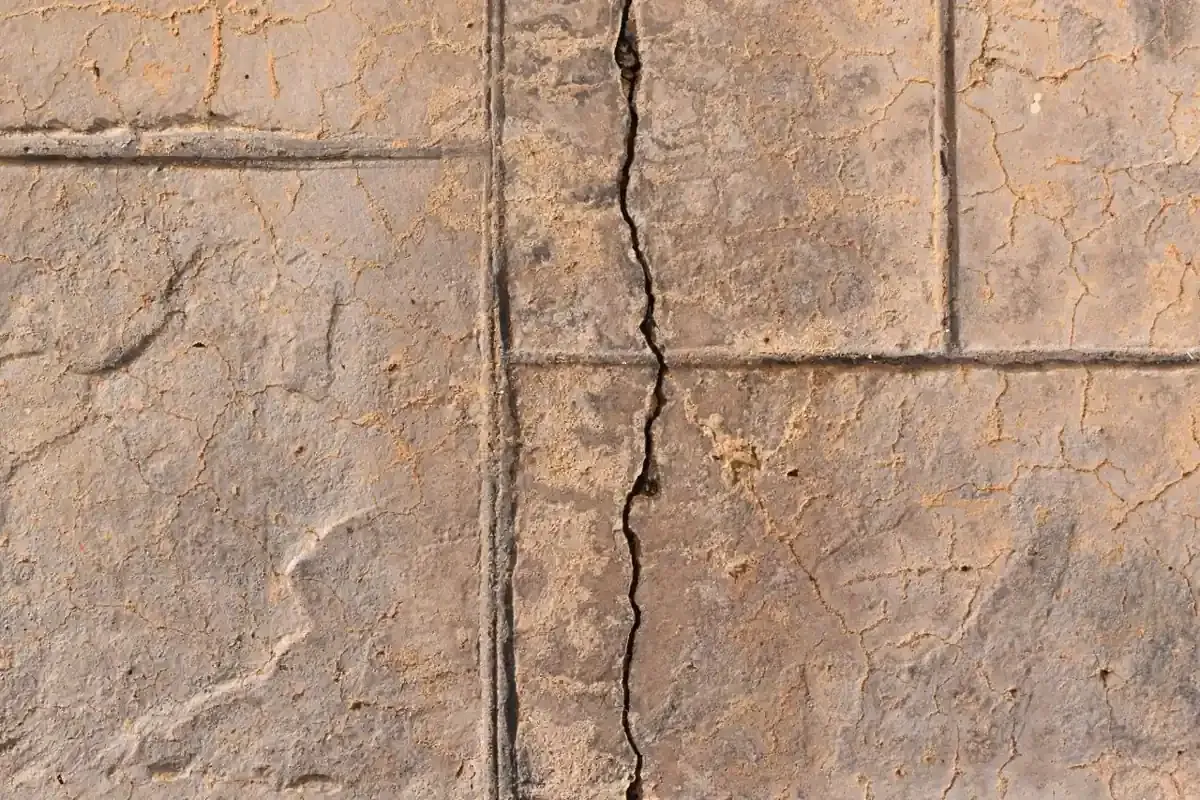Stamped vs. Traditional Concrete: Which Option Is Best for Your Frisco Home?
Choosing the right concrete for your property involves more than picking between two installation methods. Your decision affects your home's appearance, maintenance requirements, and long-term costs. Understanding the differences between stamped and traditional concrete helps you make an informed choice that matches your needs and budget.
Understanding Traditional Concrete

Traditional concrete, also called plain or broom-finished concrete, provides a simple, functional surface. Contractors pour the concrete, level it, and create a textured finish using a broom or trowel. This straightforward approach has served homeowners reliably for decades. The standard gray surface offers durability without decorative elements. Many driveways, patios, and walkways use traditional concrete because it delivers solid performance at a reasonable price point. While it may lack visual interest, traditional concrete provides dependable service for properties throughout Texas.
Exploring Stamped Concrete Options

Stamped concrete transforms ordinary surfaces into decorative features that mimic premium materials. Contractors use specialized stamps to create patterns resembling brick, stone, tile, wood, or custom designs. Color additions enhance the realistic appearance of these patterns. The stamping process occurs while concrete remains workable after pouring. Workers press large stamps into the surface, creating detailed textures and patterns. They can add color through integral pigments mixed into the concrete or surface-applied color hardeners and stains.
Evaluating Durability and Longevity
Both concrete types offer excellent durability when properly installed and maintained. Traditional concrete can last 30 years or more with minimal care. Its simple surface resists damage from heavy use, weather exposure, and temperature fluctuations common in Texas. Stamped concrete provides similar structural durability but requires more attention to maintain its appearance. The decorative surface can show wear patterns over time, especially in high-traffic areas. Sealer reapplication becomes essential for preserving color and texture definition.
Maintenance Requirements and Considerations
Traditional concrete demands minimal maintenance. Regular sweeping and occasional pressure washing keep surfaces clean. Sealing every few years protects against staining and moisture penetration. Cracks may develop over time but can be repaired relatively easily. Stamped concrete requires more attentive care. The decorative surface needs resealing every two to three years to maintain appearance and protection. Without regular sealing, colors fade and texture details become less distinct. High-traffic areas may need more frequent attention. Cleaning stamped concrete requires gentle methods that preserve the decorative finish. Harsh chemicals or aggressive pressure washing can damage color and texture. Specialized concrete cleaners work best for maintaining stamped surfaces without causing deterioration.
Design Flexibility and Aesthetic Appeal
Traditional concrete offers limited design options. You can choose different finish textures like broom finish, smooth trowel, or exposed aggregate. Color options exist through integral pigments or stains, but the overall appearance remains relatively plain. Stamped concrete provides extensive design possibilities. Pattern choices include slate, flagstone, brick, cobblestone, wood plank, tile, and custom designs. Multiple colors can create realistic variations found in natural materials. Borders and accents add further customization. The aesthetic difference between these options significantly impacts your property's appearance. Traditional concrete suits functional areas where appearance matters less. Stamped concrete transforms visible spaces into attractive features that complement your home's architecture and landscaping.
Best Applications for Each Type
Traditional concrete excels in several situations. Driveways focused on functionality rather than appearance work well with standard concrete. Garage floors, workshop areas, and utility spaces benefit from its durability without needing decorative features. Budget-conscious projects often choose traditional concrete for practical reasons. Stamped concrete shines in highly visible areas. Patios, pool decks, walkways, and front entry areas gain significant appeal from stamped finishes. Outdoor entertainment spaces benefit from the upgraded appearance. Properties marketed for sale see improved curb appeal with decorative concrete features.
Climate Considerations for Texas Properties
Texas weather presents specific challenges for concrete installations. Intense summer heat can cause rapid drying during installation, potentially leading to cracking. Proper curing techniques become essential regardless of which concrete type you select. Occasional heavy rains and clay soils throughout the region require adequate drainage and proper base preparation. Both traditional and stamped concrete need solid foundations to prevent settling and cracking. Professional installation accounts for these local conditions.
Resale Value and Property Appeal
Stamped concrete typically adds more value to properties than traditional concrete. Potential buyers notice upgraded outdoor spaces and attractive hardscaping. Well-maintained stamped concrete patios and driveways enhance first impressions and overall property appeal. Traditional concrete maintains property value without adding significant enhancement. It meets functional requirements without detracting from appearance. In some cases, fresh traditional concrete improves properties by replacing damaged or deteriorated surfaces.
Making Your Decision
Choosing between stamped and traditional concrete depends on several factors. Consider your budget limitations and how much you can allocate to concrete projects. Evaluate which areas need concrete work and how visible those spaces are to guests and passersby. Think about long-term maintenance commitment. Stamped concrete requires regular resealing and careful cleaning. Traditional concrete needs less attention but offers fewer aesthetic benefits. Your willingness to perform or pay for maintenance affects which option suits you best. Consider how long you plan to stay in your home. If you intend to sell within a few years, stamped concrete might enhance market appeal. Long-term homeowners should weigh ongoing maintenance against their desire for attractive outdoor spaces.
Professional Installation in Frisco, TX
Quality installation significantly impacts concrete performance regardless of type. Proper site preparation, appropriate concrete mixes, and correct finishing techniques determine long-term success. Working with experienced professionals ensures your concrete project meets expectations. Steadfast Concrete provides expert installation services for both stamped and traditional concrete throughout Frisco and surrounding areas. Our concrete contractors helps homeowners evaluate their specific needs and recommends appropriate solutions. We handle everything from initial consultation through project completion. Whether you choose the classic simplicity of traditional concrete or the enhanced beauty of stamped designs, professional installation protects your investment. Contact Steadfast Concrete today to discuss your concrete project. Our experienced professionals will explain your options and provide detailed estimates for transforming your outdoor spaces.
Frequently Asked Questions
How long does stamped concrete last compared to traditional concrete?
Both types last 25 to 30 years or more with proper installation and maintenance. Stamped concrete may show appearance wear sooner than traditional concrete but maintains structural integrity equally well. Regular sealing preserves stamped concrete appearance throughout its lifespan.
Can I change the color of existing traditional concrete to look like stamped concrete?
You cannot add stamped patterns to existing concrete, but you can apply concrete stains and overlays to improve appearance. These treatments add color and some texture without the dimensional patterns of true stamped concrete. This option costs less than removal and replacement.
Does stamped concrete crack more easily than traditional concrete?
Stamped concrete has the same structural properties as traditional concrete and cracks at similar rates. Proper installation with control joints manages cracking in both types. The decorative surface of stamped concrete may make cracks more visible than on plain concrete.
Is stamped concrete slippery when wet?
Stamped concrete texture provides reasonable slip resistance, though smooth patterns can become slippery when wet. Applying slip-resistant sealers or choosing textured patterns improves traction. Traditional concrete with broom finish often provides better slip resistance in wet conditions.
Can I install stamped concrete myself to save money?
Stamped concrete requires specialized tools, materials, and expertise for quality results. The narrow working window during installation makes DIY projects risky. Poor stamping technique or timing results in disappointing appearance that cannot be easily corrected. Professional installation ensures satisfactory outcomes.



